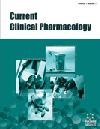- Home
- A-Z Publications
- Current Clinical Pharmacology
- Previous Issues
- Volume 17, Issue 1, 2022
Current Clinical Pharmacology - Volume 17, Issue 1, 2022
Volume 17, Issue 1, 2022
-
-
Chronic Cannabis Users: A New Special Population to Consider for Drug Development
More LessAuthors: Gina Pastino and Diana ShusterThe use and acceptance of cannabis, either medically or recreationally, has substantially outpaced the collection of data necessary to evaluate it’s use in any population. However, the mere widespread availability does not imply the absence of risk or confirmation of efficacy and should not be treated as such. There is enough data to suggest that not only does the potential for pharmacokinetic and metabolic interactions exist, Read More
-
-
-
The Patient Motivation Pyramid and Patient-Centricity in Early Clinical Development
More LessBackground: It has been recognized that patients should be involved in the design of clinical trials. However, there is a lack of agreement on what patient-centricity means. Methods: In this article, a Patient Motivation Pyramid based on Maslow’s theory of human motivation is introduced as a tool to identify patient needs. This pyramid is used to make a comprehensive overview of options to implement a patient-centric trial de Read More
-
-
-
Framework for the Design of Cannabis-Mediated Phase I Drug-Drug Interaction Studies
More LessAuthors: Diana L. Shuster, Gina Pastino and Dirk CerneusCannabis has become legal in much of the United States similar to many other countries, for either recreational or medical use. The use of cannabis products is rapidly increasing while the body of knowledge of its myriad of effects still lags. In vitro and clinical data show that cannabis’ main constituents, delta-9-tetrahydrocannabinol and cannabidiol, can affect pharmacokinetics (PK), safety, and pharmacodynamics (PD) Read More
-
-
-
Predictability of Elimination and Excretion of Small Molecules in Animals and Humans, and its Impact on Dosimetry for human ADME Studies with Radiolabeled Drugs
More LessAuthors: Ad Roffel, Jan J. v. Lier, Gerk Rozema and Ewoud-Jan van HoogdalemBackground: We assessed the extent to which urinary and fecal excretion of 14C-labeled drug material in animal ADME studies was predictive of human ADME studies. We compared observed plasma elimination half-lives for total drug-related radioactivity in humans to pre-study predictions, and we estimated the impact of any major differences on human dosimetry calculations. Methods: We included 34 human ADME studies Read More
-
-
-
Current Advances in Clinical Trials for Rare Disease Populations: Spotlight on the Patient
More LessAuthors: Erica Winter and Scott SchliebnerCharacterized by small, highly heterogeneous patient populations, rare disease trials magnify the challenges often encountered in traditional clinical trials. In recent years, there have been increased efforts by stakeholders to improve drug development in rare diseases through novel approaches to clinical trial designs and statistical analyses. We highlight and discuss some of the current and emerging approaches aim Read More
-
-
-
Role of Brain Imaging in Drug Development for Psychiatry
More LessBackground: Over the last decades, many brain imaging studies have contributed to new insights in the pathogenesis of psychiatric disease. However, in spite of these developments, progress in the development of novel therapeutic drugs for prevalent psychiatric health conditions has been limited. Objective: In this review, we discuss translational, diagnostic and methodological issues that have hampered drug develop Read More
-
-
-
Ventilatory Response to Hypercapnia as Experimental Model to Study Effects of Oxycodone on Respiratory Depression
More LessAuthors: Lynn R. Webster, Erik Hansen, Gregory J. Stoddard, Austin Rynders, David Ostler and Harley LennonBackground: Opioid analgesics used to treat pain can cause respiratory depression. However, this effect has not been extensively studied, and life-threatening, opioid-induced respiratory depression remains difficult to predict. We tested the ventilatory response to hypercapnia for evaluating the pharmacodynamic effect of a drug on respiratory depression. Methods: We conducted a randomized, placebo-controlled, double-blind, c Read More
-
Most Read This Month
Article
content/journals/ccp
Journal
10
5
false
en


